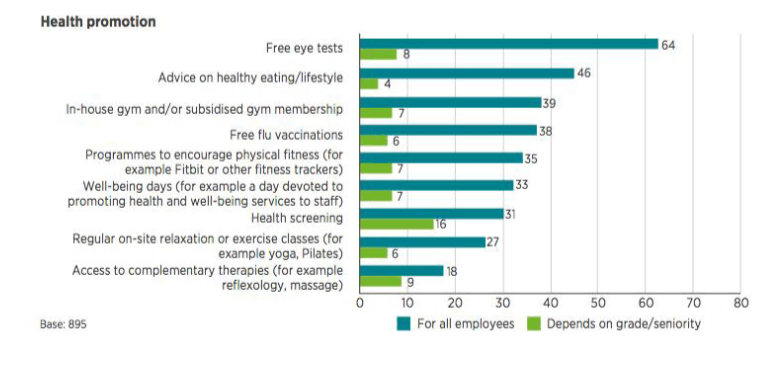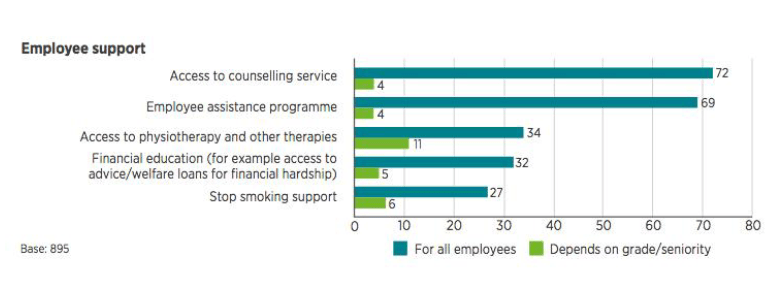Your Talking Body,
Our Listening Hands.
Release, Relax, Revive

Well-Being At Work
Read on to find out more.
Employee Well-Being At Work

As an ex-HR Professional, I believe employers can benefit from employee well-being programmes and am offering to work with local businesses, to implement an employee health and well-being programme.
I believe employee well-being not only impacts employee health, but impacts a business or organisation in a positive, effective, efficient and productive way.
It fosters employee engagement and improves employer branding, and there is numerous professional research by way of studies and surveys which support this.
Given the increase in mental health issues and stressful living, not least caused by the recent pandemic, along with the demands of modern working life, the numerous studies and surveys around health and well-being in the workplace and the evidence of the positive impact of wellbeing programmes on an organisation resulting in less absenteeism and more employee engagement, it is hard to ignore the return on investment and benefits of offering employees access to the different kinds of support available to improve the health and well-being of the workforce.
There is a wealth of research and studies regarding employee health and well-being, which evidence the benefits of well-being programmes in the workplace, along with research around complementary and alternative therapies which evidence the benefits of these therapies on an individual.
Below, you will find details of some of the evidence to support these beliefs, and there is plenty of evidence out there!
Well-Being In The Workplace

Well-being can be both subjective and objective.
(UK Department of Health).
Mental health is a state of both mental and psychological well-being where every person realises their potential.
They can cope with the normal stresses and strains of life, they can work effectively and efficiently, and are able to make a contribution to their community.
(World Health Organisation – WHO).
- Have positive self esteem,
- Build and maintain good relationships
- Feel relatively confident
- Live and work productively
- Cope with the stresses of everyday life, which includes work related stresses
- Feeling engaged with the world
- Feel and express a range of emotions
Well-Being At Work

Work-related stress, (as defined by the WHO), is the response people may have when presented with demands and pressures that are not matched to their abilities, leading to an inability to cope, especially when employees feel they have little support from supervisors and little control over work processes.
employers £42bn – £45bn each year.
This is made up of absence costs of around £7bn, presenteeism costs ranging from about £27bn to £29bn and turnover costs of around £9bn.
This is an increase of about 6bn and 16% on the figures in our 2017 report, driven primarily by a rise in presenteeism – coming to work despite poor health and underperforming.”
(Deloitte UK Mental Health And Employers, Published online January 2020:)
“Fostering employee well-being is good for people and the organisation.
Promoting well-being can help prevent stress and create positive working environments where individuals and organisations can thrive.
Good health and well-being can be a core enabler of employee engagement and organisational performance”.
(CIPD Wellbeing At Work, Published online April 2020:)
The CIPD report “Growing The Health and Well-being Agenda Report” demonstrates that people can thrive and grow, reaching their potential in workplaces that have effective well-being programmes.
The report also suggests that holistic health and well-being platforms have gained much wider understanding and application in many businesses, yet there is still a lack of effective and full adoption of health and well-being in just as many organisations.
productivity, yet these initiatives are often inadequate as they are detached from the business.
Therefore it is essential that well-being initiatives are entrenched in an organisation’s leadership, people management and thus the culture of the business, and that there is a unique opportunity for this to be directed at senior managers to make it a priority and ensure that line managers recognise, accept and uphold its value.
(CIPD Growing The Health and Well-being Agenda, published online April 2021:)
Published Online March 2020,)
The same survey found, that three-fifths (60%) of businesses in the UK reported an increase in anxiety and depression amongst their employees over the year leading up to the report, demonstrating the need to address the psychological aspects of health and well-being as well as physical ones.
37% of these respondents reported increases in stress related absences over the previous 12 months.
What is worrying is that whilst an increasing number of organisations are taking steps to identify and reduce stress at work and manage the mental health of their employees, 33% of those who report seeing an increase in stress related absences over the past year say their organisations are not taking any action to tackle this.
(CIPD Good Work Index, published online June 2020)
Seven areas of employee well-being have been identified by the CIPD, which are interlinked.
The first of these is health; incorporating both physical and mental health as well as physical safety.
Also among these seven elements is incorporating a health and well-being strategy, and Good Lifestyle Choices; and incorporating physical activity such as walking clubs and lunchtime yoga.
(CIPD Wellbeing At Work, Published online April 2020,)
More organisations appear to be taking a more holistic approach to employee health and well-being, and mental health looks to be the main priority.
However, sadly, there has only been a 4% increase in employers taking a strategic approach to employee well-being by implementing a well-being strategy to support the wider organisational strategy.
(CIPD Health And Wellbeing At Work Survey, Published Online March 2020,)
As can be seen in the chart below, whilst one or more well-being benefits are provided to employees by most organisations, less than 20% offer complimentary/holistic therapies to staff, with 9% of these being dependent on pay grade/scale/seniority.
However, it is encouraging that Well-being Days are offered to 33% of employees, which is consistent with the second chart, which also shows 34% of organisations surveyed support their employees by offering access to physiotherapy and other therapies, although 11% of those are dependent on pay grade/seniority.

( CIPD Health And Well-being At Work Survey, Published Online March 2020,)
(CIPD Health And Well-being At Work Survey, Published Online March 2020,)
Why Invest In Well-Being / Mental Health Interventions?

(CIPD Well-being At Work, Published online April 2020,)
A significant percentage (89%) of organisations who have a well-being programme report positive results, with over half of these reporting improved morale and engagement, as well as a healthier, more inclusive culture, whilst 30% of respondents are seeing lower sickness absences, reduced work-related stress and an improved employer brand.

(CIPD Health And Well-being At Work Survey, Published Online March 2020,)
“Many complementary therapies concentrate on relaxation and reducing stress.
They might help to calm your emotions, relieve anxiety, and increase your general sense of health and well-being.
Many doctors, cancer nurses and researchers are interested in the idea that positive emotions can improve your health”.
(Cancer Research UK, Available Online:)
Other Sources Of Information
The benefits of complementary and alternative therapies:

Effects of Aromatherapy on the Anxiety, Vital Signs, and Sleep Quality of Percutaneous Coronary Intervention Patients in Intensive Care Units.
The Effectiveness of Aromatherapy for Depressive Symptoms:
A Systematic Review:
Reiki:
Research on Reiki (documents):


